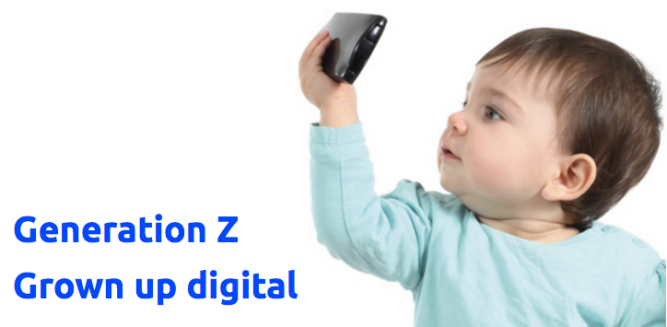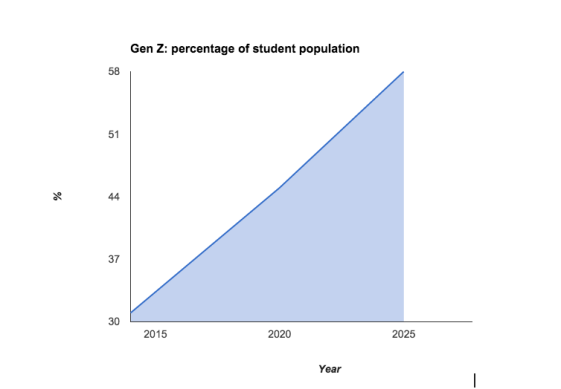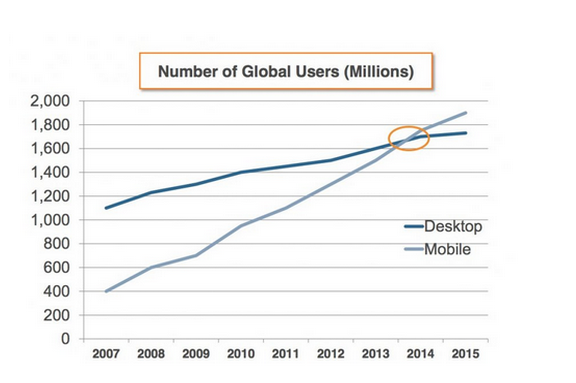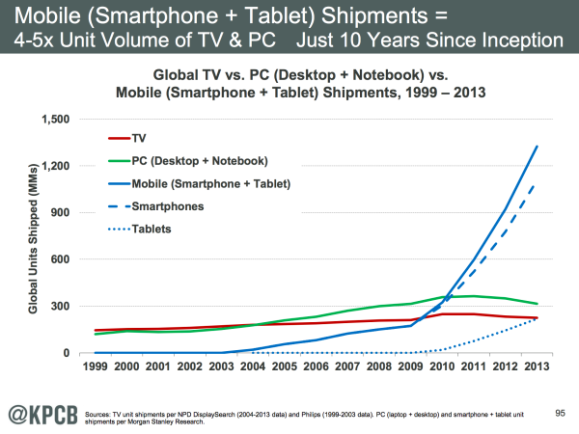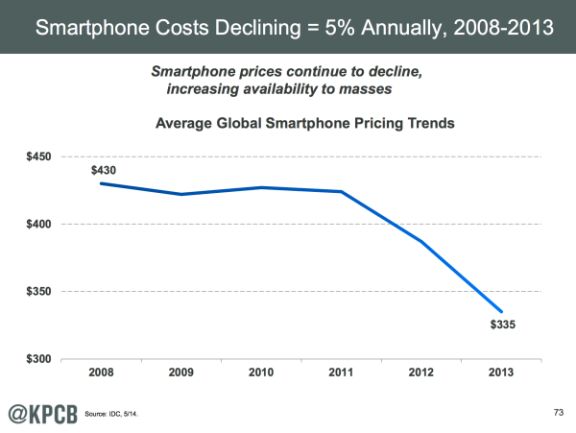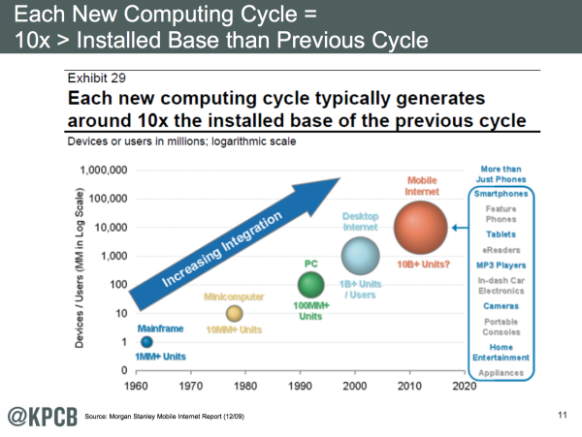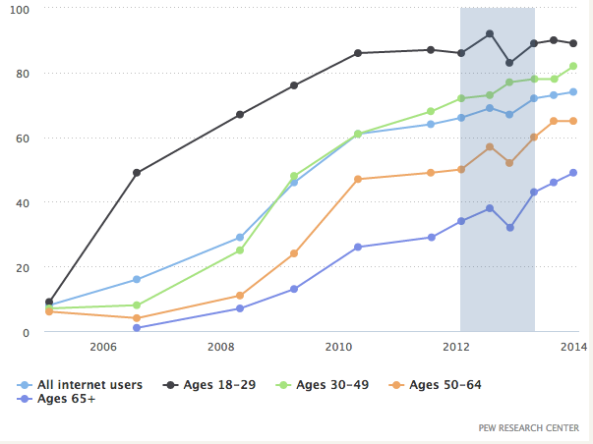Education Technology: A Crisis Of Relevance
“If you want to work on this at home email it to yourself as a Word document”
This is the advice I often hear teachers giving students after a lesson using word processing (Microsoft Word) on computers (desktop PCs running Microsoft Windows) in an “IT suite”. The students have usually been using the computers to research the Web, gather information and type up an assignment that is usually printed at some point….in education writing an essay is a well established model as is the use of IT suites with desktop PCs running Microsoft Windows and Microsoft Office.
Reports, assignments, essays, email, Microsoft Office,Windows PCs and IT suites are all familiar and comfortable for education managers and teachers .. after all they have spent and continue to spend the majority of their working lives with these things.
“Can you share that on Whatsapp”
This is the advice I often hear students give to each other … I never hear students talk about emailing each other let alone using Microsoft office .. instead they will choose from a diverse range if communications apps on mobiles .. often in a communication rich and sophisticated manner using images, symbols, abbreviations and codes.
We are in the Post PC age already
2014 marked a tipping point – there was more Internet traffic from mobiles than from PCs. PC sales remain flat while mobile sales continue to grow .. these devices aren’t “pocket PCs” they are a new type of thing and capable of so much more .. maybe PDA (Personal Digital Assistant) is more appropriate term than smartphone but pocket they certainly aren’t.
Mobile and social media are well established and have become a “rite of passage” for teenagers and people in life yet is not only ignored but actively blocked by an education system still firmly stuck in 1999 and and fearing the “Millennial bug”.
“Can you block Facebook”
Maybe nothing represents the disconnect of education technology more than the call to block Facebook .. something which is now more relevant to “old people” than to our students.
Is it possible for education to stop fearing our young learners and to connect with them in ways that are meaningful to them rather than the institution?
———–
By the way .. just to prove a point .. I created this blog post entirely on a smartphone using Google Docs and the WordPress Android App. This may become my preferred method of blogging now – it is so much more enjoyable and non intrusive – I was able to write this in many locations at many times – it suites the way I like to work.
While it’s primarily an essay form it does show that even this can be accommodated in a post PC world. However, a post PC world us capable of so much more.
Strategy: The future of work – Technology People and Moore’s law
When we think about work we usually think about people – their mental or physical effort – either alone, with other people or with technology. However, the characteristics of both technology and people are changing and so will the future of work.
Technology has always been an important factor in work – from the earliest of times people have developed and used tools to compliment, enhance and amplify what they can do. Where work and the actions of a tool are repetitive and predictable then it becomes possible to automate the tool to create a machine.
Tools compliment people in work whereas machines replace them in work and change the nature of work at the same time. While people use a tool to do work, with a machine its different – the machine does the work and people’s work becomes the machine – operating and attending to the machine.
Machines have only been able to go so far economically (compared with the cost of people to do the same task) and to where and how they can be applied. However, all this is changing – changing economics and technology suggest that we are entering a new machine age and this has radical consequences for the future of people in work.
Technology developments are starting to radically reduce the cost of robots and machines while at the same time the cost of people continues to increase – making machines more economical than ever before. Computer developments, machine learning and AI are radically changing how and where machines are applied. The predictability required by machines once meant that they were applied only in controlled environments (a typical factory installation for example) but now we are starting to see more machines operating in the real world – Google’s driverless car is an important precursor of this development. The same trend has already happened in IT – where once computers were large, expensive and used in special conditions (think of an office and a desktop PC) .. we now find them out in the real world with us (think smartphones and wearable tech). In the years ahead we should expect to see more and more machines and robots leaving their factories for our world.
Once something becomes digital change and impact becomes rapid (if not exponential) – we are starting to see “Moore’s law” in the digital aspect of machines – if this is the case then we should expect to see radical advances in the application of machines and robots in the 21st century. In 1997 IBMs Deep Blue became the first machine to beat a human world champion at chess – 14 years later IBM returned with Watson to become the first machine win the TV trivia game Jeopardy in 2011. Deep blue was very much a traditional machine – it did one thing .. a special purpose computer to play chess by “brute force analysis” to work out chess moves to greater depth than any human player ever could. Watson however represented something different – IBM describes it as a “smart machine” able to answer questions in natural language. Since winning Jeopardy IBM has developed Watson and what it calls cognitive technology – Watson is now 24 times faster, 90 times smaller and described as performance improved by 2,400%. IBM have made Watson available on the web as a cloud product and developer “ecosystem” to support the development of what IBM describe as “cognitive apps” – today – you can carry Watson in your pocket!
On the 7th June 2014 computer program Eugene Goostman simulated a 13 year old boy from Odessa in unrestricted conversations – a machine passed the Turing test for the first time
On December 7th 2014 IPsoft launched Amelia – described as “the first cognitive agent who understands like a human … our cognitive knowledge worker, interfaces on human terms. She is a virtual agent who understands what people ask – even what they feel – when they call for service. Amelia can be deployed straight from the cloud in a fraction of the time. She learns as she works and provides high-quality responses consistently, every day of the year, in every language your customers speak” IPsoft sees Amelia supplementing, or directly replacing, virtually all ‘non-expert, repetitive’ job functions from customer support to expert assistance and back office roles.
Management consultancy Accenture is using Amelia in its cognitive services saying “The cognitive and learning capabilities of the Amelia platform allow it to easily absorb routine processes as well as learn from natural language interactions in order to solve customer problems and respond successfully to a wide range of queries”. Accenture is helping Shell deploy Amelia in its internal training programme, answering queries from learning advisors – “she will observe how advisors interact with staff until she is ready to automate the processes herself.” Baker Hughes is testing Amelia in its financial department on its Accounts Payable helpdesk to address queries from vendors around invoices and payments.
Sean Ammirati writes that Any office job that involves drudgery is a candidate for automation. One way to think about occupations ripe for robots is to look at different professional tasks with a knowable problem and solution – even if it’s really complex to figure out that solution.
Research from the Oxford Martin School at Oxford university suggests that nearly half of all jobs in the US are likely to be automated in the coming decades. The research concludes that “While computerisation has been historically confined to routine tasks involving explicit rule-based activities algorithms for big data are now rapidly entering domains reliant upon pattern recognition and can readily substitute for labour in a wide range of non-routine cognitive tasks . In addition, advanced robots are gaining enhanced senses and dexterity, allowing them to perform a broader scope of manual tasks. For workers to win the race, they will have to acquire creative and social skills.
A recent report from Deloitte suggests that Computers and robots are set to replace more than a third of UK jobs in the next twenty years. Work in repetitive processing, office administration, clerical and support service jobs, sales and transportation are most at risk. The report says that “Although the replacement of people by machines is well understood, the scale and scope of changes yet to come may not be … Unless these changes coming in the next two decades are fully understood and anticipated by businesses, policy makers and educators, there will be a risk of avoidable unemployment and under-employment”
But wait .. there’s more. Brian Arthur writes about the Second Economy – the computer-intensive portion of the economy where machines transact with other machines without humans in a “vast, automatic, and invisible economy without workers thereby bringing the biggest change since the Industrial Revolution”
At the very extreme pessimistic end of the spectrum Stephen Hawking thinks that “Artificial Intelligence Could End Human Race”, Nick Bostrom warns that AI could be more dangerous than nuclear weapons and that “artificial intelligence may doom the human race within a century” while Elon Musk hopes “we’re not just the biological boot loader for digital superintelligence” that “With artificial intelligence, we are summoning the demon” and “worries Skynet is only five years off”
The changes in technology mentioned above suggest radical and pessimistic negative impacts for work and for people but this assumes nothing else changes. However, people are incredibly resourceful and other views are more optimistic.
Gerd Leonhard suggests that the concept of work as we know it is toast but that many new areas will open up in new or unpredictable niches, with titles we can only guess at at present and that there are all those areas where human soft skills are essential. Many lower-paid but intricate jobs (think electricians or plumbers) with too many variables may be too expensive to automate. And there will surely always be a premium for the human touch in some areas that could be automated – cooking or teaching, for example
Greg Satell gives some useful advice on How to Avoid Being Replaced By A Robot – learn To Ask Questions, Improve your social skills and go beyond the routine. “the division is no longer between manual and cognitive tasks as much as it is between routine and non-routine work.” Anything that is standardised and routine is at risk of being automated. Greg leaves us with the optimistic message that by “automating tasks, we are liberating human imagination and the human spirit. The more we unlock the secrets of technology, the more we find ourselves.”
Andrew McAfee compares the information revolution with the industrial revolution and takes a very optimistic view – “what we’re in the middle of now is overcoming the limitations of our individual brains and infinitely multiplying our mental power. How can this not be as big a deal as overcoming the limitations of our muscles?” … we ain’t seen nothing yet. The best days are really ahead”. Andrew makes the point that “Economies run on ideas. So the work of innovation, the work of coming up with new ideas, is some of the most powerful, some of the most fundamental work that we can do in an economy. In the technology-facilitated world .. the work of innovation is becoming more open, more inclusive, more transparent, and more merit-based.
As automation looks set to impact traditional notions of work and how we work technology changes and a new generation of people emerge that can make the most of the new conditions and potentially reimagine work as we know it. In 2014 Internet traffic from mobile use exceeded PC use for the first time – signalling the start of a new era of anytime, anywhere IT and the potential for anytime, anywhere work. Rather than us having to come to work – work can come to us. Mobile IT combined with social media, cloud and web access are powerful tools in the right hands. New cultural movements like the Maker Movement combined with new technologies like 3D printing, Internet of Things and cheaper more accessible “maker” electronics like Raspberry PI, Adruino and Intel’s Edison suggest potential future artisan economies of scope, creativity and imagination while machines replace more routine and standardised work.
The generation who have “grown up digital” in the 21st century have grown up with the tools we shaped for them – the Net, the Web, mobile phones, smartphones, social networks and social media. Generation Z have grown up with information and communication at their fingertips. Those born in the 21st century will be able to “race with the machines” – and as Greg Satell says “our value will be determined not by how much we know or even how hard we work, but how well we collaborate with machines and with each other”. Research by Sparks & Honey’describes Generation Z as developing their personalities and life skills in a socio-economic environment marked by chaos, uncertainty, volatility and complexity. They have learned that traditional choices don’t guarantee success. They “Intend to change the world. That entrepreneurship and social entrepreneurship is one of their most popular career choices – 72% want to start a business and 61% want to be an entrepreneur rather than an employee.
While it seems that a new generation are ready to “race with the machines” John Hagel suggests that our institutions and their organisation are the main problem. He says that “at its core, this isn’t a technological challenge, but an institutional challenge. We’re dealing with a set of institutions that are increasingly inappropriate for the mounting pressure we face. The root cause is how we’ve defined work in companies … one of the issues is this formula for how work is conducted was developed in the last century, and it was based on a set of infrastructures and assumption of a stable environment that made it easy to define standardized highly-scripted work. Now we’re in a world that’s more rapidly changing, more uncertainty, more of those extreme events that Taleb calls the “black swans” that make it really critical for us as individuals in the workplace to take much more initiative, to be constantly exercising creativity and imagination to respond to the unexpected events. That’s a very different model of work. It requires a very different way of organizing our institutions and a different set of work practices that are much harder to automate. Rather than pursuing scalable efficiency, perhaps we need a new set of institutions that can drive scalable learning, helping participants to learn faster by working together.
“We have stone-age emotions, medieval institutions and godlike technology.”— E.O. Wilson
Hagel says that “Until we can develop an alternative institutional model, one that can scale as effectively as the scalable efficiency model, we will face mounting pressure from machines and remain locked in a race against the machine without the ability to finally race with the machine. The problem is how do we innovate our institutions and our work practices so that we, in fact, can start “racing with the machine.”
Ultimately technology may provide a platform to race with machines – a new generation of developers like Vitalik Buterin working with open, autonomous, decentralised technologies suggest could Bootstrap decentralized autonomous corporations where we can work together with other agents on the network … not necessarily knowing whether they are human or not.
Strategy: Demographics, Evolution and the Millennium bug
Today 31% of our student population have been born during or after 1995 – the year our college connected to the Internet. The inescapable truth is that this generation will increase in representation over time – extrapolating from current data they will represent the majority of our student population in under a decade.
Given the inevitability of generation change .. what should we expect – what are the characteristics of the generation growing up in the 21st century?
Marshall McLuhan wrote about the dynamic between technology and culture the phrase attributed to him “we shape our tools and thereafter our tools shape us” describes the dynamic at play with what Don Tapscott describes as the “Net generation” – a generation that has grown up digital.
Generation Z have grown up with the tools we shaped for them – the Net, the Web, mobile phones, smartphones, social networks and social media. Generation Z have grown up with information and communication at their fingertips.
While Generation Z are only just starting to define themselves and generalising about a whole population of individuals is so problematic research by Sparks & Honey describes Generation Z as developing their personalities and life skills in a socio-economic environment marked by chaos, uncertainty, volatility and complexity. They have learned that traditional choices don’t guarantee success. They “Intend to change the world. That entrepreneurship and social entrepreneurship is one of their most popular career choices – 72% want to start a business and 61% want to be an entrepreneur rather than an employee.
Research and anecdotes offer at least some generalised descriptions we can appreciate:
* “Screenagers” – multi-tasking, multi-screeners
* Instant minded with short attention spans
* Available anywhere, any time
* Global, social, visual and technological
* Communicate at speed – often with symbols and images
* Prefer media that they can interact and collaborate with
* Use social media as a research tool
Writers such as Nick Carr, Mark Baulerein and Sherry Turkle are pessimistic about Generation Z – they worry about the effects of declining real world social skills; reducing attention spans, memory and the ability to “dive deep” into complex information.
Writers such a Don Tapscott, Clay Shirky and Mark McCrindle are more optimistic about generation Z seeing Generation Z characteristics as adaptive responses to their environment. With so much connectivity there comes so much more information to process – the natural adaption is to multi-task and to communicate in smaller and richer ways.
The pessimists look backward and consider Generation Z within a 20th century environment while the optimists look forward and consider Generation Z within a 21st century environment.
The optimists take an evolutionary perspective on Generation Z:
Don Tapscott: “What we’re actually watching is adaptive reflexes—faster switching and more active working memories”. “If you understand the Net generation, you will understand the future”
Mark McCrindle: “They don’t just represent the future, they are creating it.” . “Where Gen Z goes, our world goes.” What that portends is seismic social disruption and the commensurate anxiety.
Others take a psychographic view – rather than a date of birth they see it as a state of mind and refer to “Generation C” as a connected demographic – a population of “digital natives” – comfortable and familiar with technology, Net, Web, social and mobile.
Regardless of age – there is good evidence of how connectivity changes us – how “our tools shape us” for example:
First-time Internet users find boost in brain function after just one week “The results suggest that searching online may be a simple form of brain exercise that might be employed to enhance cognition in older adults,
The internet has changed the way we remember things. “If you take away the mindset of memorization, it might be that people get more information out of what they are reading, and they might better remember the concept,”
What is clear is that a new demographic will rise over the next decade – a demographic that is adapting to the connectivity of the 21st century and the information age. While the millennium bug didn’t disrupt the world at the turn of the century – the real millenium bug is about to unfold – those coming of age in the new millenium have adapted to a new environment and are working their way through our society – those organisations which cannot adapt along with the new generation may might just yet have their “Kodak moments”.
“One thing Carr and Shirky agree on is that there are likely to be troubling dislocations and tough adjustments for institutions and industries whose modus operandi largely revolve around scarcities of knowledge and capabilities that no longer exist. Wherever the Web enables people to connect and collaborate around tasks that used to be done exclusively by professionals, there is now an historic opportunity for people with passion, drive and talent to participate fully in forging alternative institutions that do the same things, only better.” ~ Anthony D. Williams
————
Sources and references
Anne Kingston: Get ready for Generation Z
Sparks & Honey: Meet Generation Z: Forget Everything You Learned About Millennials
Michael Poh: 6 Ways The Internet Is Slowly Transforming Our Minds
Anthony D. Williams; Battle of the Web gurus
Nicholas Carr: “Is Google Making Us Stupid”
Sherry Turkle: “Alone Together: Why We Expect More From Technology and Less From Each Other”
Mark Baulerein: “The Dumbest Generation: How the Digital Age Stupefies Young Americans and Jeopardizes Our Future”
Don Tapscott: “Grown Up Digital: How the Net Generation is Changing the World”
Strategy: Technology Context 2014
The evolution of IT has been towards increasingly pervasive personal technology – from shared room sized mainframes through shared PCs and laptops to todays smartphones and towards tomorrows wearable technology. Where once we talked about student:computer ratios – soon we expect everyone to have their own IT (carried or worn) and hyper-connected in pervasive personal contexts where “web meets world”
Context is everything in framing strategies – especially today when context itself is strategic.
1996: “Content Is King” ~ Bill Gates
The era of desktop PCs telephone modems, the Word Wide Wait and the “static websites that were not yet providing interactive content” of Web 1.0 strategies were framed around creating content for consumption.
2006: Context – not content – is king ~ Chris Anderson
The era of PC broadband, wifi and the scope and scale of user content generated by the interactivity of Web 2.0. strategies were framed around curating and contextualising content for participation.
2013 “Age of Context” ~ Robert Scoble and Shel Israel
The era of social media, mobile, data, sensors and location-based technology combined with form a new generation of personalised technology that promise to change virtually every aspect of our lives – strategies are increasingly framed around personal technology.
2014: “A tipping point for Internet”
Mobile users exceed PC users for the first time, PC sales continue their long decline and new generation technologies such as wearable IT, 3D printing and the Internet of things are emerging into the mainstream. We are in what Tim O’reilly and John Battelle’s Web2 era – where “Web meets world”, digital power laws, network effects and the combination of web 2 technologies with social, mobile and sensory technologies create a period of exponential change.
* IT is becoming increasingly mobile and pervasive
Mobile users exceed PC users for the first time
Mobile device sales growing rapidly while PC sales slowly decline
Smartphone prices continue to decline increasing availability
Each generation of computing has ten times the installed base of the previous cycle
The Desktop Internet generation had an estimated 1 billion devices, the Mobile Internet generation is expected to rise to an estimated 10 billion devices and the next generation “The Internet Of Things” could be the upcoming 100 billion unit device category.
Social networks and media are established and increasingly important
74% of all online adults use social networking sites – the younger you are the more likely you are to be an active social networking user.
Personal technology is key
Consumer IT has overtaken enterprise technology
Trends experienced by young people must shape our future
In the next 10 years, Millennials will dominate the workforce
The Harlem Shake: The Network Event horizon
The Harlem Shake signals a new era and a new type of “mass” production
Traditional “modern” economics, culture, media and identity have been shaped and expressed within a framework of industrialisal standardised mass production and consumption – we see this everywhere from fashion, dance, music, politics, food and education – it has become pervasive – it has become culture.
However, the Internet changes everything. With so many people so well connected anyone who is connected can be heard globally and contribute – ideas travel quicker and faster than ever before. In “Apocalypse: The Network Event Horizon” I describe how the Internet has let “the Genie is out of the bottle and “Too Big To Know” , Ruining Everything and helping a “generation to find its voice. We are approaching a point of no return – a network Event horizon – a Web Squared Technium where scale, scope and the self-reinforcing social and technology power laws of a technology mediated connectivist memetic (Cemetic) culture generate a cambrian explosion of diversity, uncertainty and non-linear emergent viral exponential change.”
Gangnum style represented a cross over point – it was a traditionally produced official product which people connected, copied – it was heavily choreographed and eminnetly reproduceable . Cross over was represented by its viral spread through the Internet and the way it was remixed in throusands of parodies and different contexts.
Harlem Shake is the cross over – there is no official video, instead there is a simple framework for people to make there own video. In the Harlem Shake we have a signal of a new type of “mass” production and consumption. Instead of a standard item being manufactured and consumed on scale we have differentiated and unique items being manufactured and consumed on scope. Harlem shake represents a shift from the old economies of scale to a new economy of scope.
Harlem shake signals the “Network Event horizon” a shift to a cemetic long-tail, maker – hacker economy of scope, creativity, non-linear, differentiated and personalised peer production and consumption.
It will be interesting to see how politics, economics, education, media and identity play out as the network event horizon approaches.
Three Horizons, Steve Jobs and Education
“The three horizons model was first published in The Alchemy of Growth by Merhdad Baghai, Stephen Coley, and David White in 1999. The fundamental idea behind the model is that we need to be thinking about innovation across three time frames” ~ Time Kastelle
Horizon 1 is about current business – gaining efficiencies and quality – involving analysis and intrepreneurship – its about business operators
Horizon 2 is about extending current business into new and related areas – involving
entrepreneurship and exploration – business builders
Horizon 3 is about radically new types of business – involving imagination and vision.
“Strategy” is often on Horizon 1 and 2 – operational and extension activities. This is probably why the core of education has changed so little. All the narratives around e-learning, MLEs and such like are on Horizon 1 and Horizon 2 – they are about efficiences and extensions within the current paradigm of education – a reinforcement and extension of the current paradigm and reality.
Horizon 3 is about “creative destruction” in a sector to create radical new opportunities – it is where we find the radical narratives of de-institutionalisation and dis-intermediation.
The problem is that Horizon 3 is beyond the vision of so many and if it can be seen or imagined then it can appear more as an hallucination – a psychotic breakdown in reality. Looking forward horizon 3 is indeed a break from current reality but looking backwards the trends can be rationalised historically. Horizon three is full of uncertainity and the unknown – “sanity” can be maintained by the comforting Kodak moment poses in rituals of operational efficiency and business extension Shirkey principles. “There is no Line on the Horizon” – horizon 3 creeps up exponentially – it is a paradigm change in the ecosystem – horizon 1 and horizon 2 strategies of efficiency and extension may not apply in a new paradigm and may be counterprodictive and even toxic.
Steve Jobs is a classic example of someone with the vision to see beyond Horizon three – to see radical new business in the signals all around him. The really distinguishing feature of Steve Jobs was his ability to match vision and imagination with innovation – to work at horizon 1 and horizon 2 in the world of efficiency and extension to actually build the world he could imagine – to combine things to create platforms, business relationships and ecosystems that gave us iTunes, iPods, iPhones and iPads – the new reality that connected cloud and mobile that we take for granted today.
Mediated by Information technology the world in which our formal and traditional education system exists is chaging more significantly than ever before – can education also change significantly – can education imagine what lies beyond horizon 3 aand adjust or will it face a Kodak moment?
How would you create education today if it didn’t already exist?
As Abraham Lincoln is credited with saying “The Best Way to Predict the Future is to Create It”
Related reading
Innovation for Now and for the Future By @Tim Kastelle This was the first article I read that mentioned the three horizon’s idea
How Apple disrupts markets and then goes on to dominate By Greg Satell Extends Tim’s Blog post and uses Steve Jobs and Apple as examples
Exploitation Across Different Innovation Horizons By Paul Hobcraft The 5th in a super series about the three horizon model
“High Anxiety” – Anxiety as a dimension in organisational culture By Martin King About the comforting rituals performed in organisations
The last Kodak moment? – Economist article about technological change and failing to adapt
The Shirky Principle By Kevin Kelly About how institutions perpetuate the problems to which they are the solution – failure to change radically.
How to Think About the Future By @Tim Kastelle On the importance of exploring the future horizon through experiments.
Apocalypse: The Network Event Horizon
Networks are central to meaning, culture and evolution. They define the community and the circulation of meaning within a community – from a connectivist perspective they define knowledge and meaning, from a memetic perspective they are the means through which memes are transmitted and from a cemetic perspective networks are culture – they are community, meaning and evolution.
However we look at it networks are vital to culture and never before have people been so connected as with the Internet. In terms of numbers 2.3 billion people were online at the end of 2011(33% of all humanity) and by 2020 it is expected that 5 billion people will be connected – 66% of all humanity. While the scale of internet connectivity is important it is the nature of this connectivity that is even more important – web 2, social media and social networks mean that anyone who is connected can be heard globally and contribute their ideas. In the next decade 3 billion new minds will become connected and most of these will be from developing countries – introducing new voices into our global networks.
The number and diversity of connections and inputs into the network is important. From a memetic view this increases the variety and mutation of memes available for selection and inheritance. When considering the problems of genetic inbreeding then memetic diversity and a large meme pool can only be healthy for humanity. From a connectivist view the number and diversity of connections and inputs into the network increases the richness of meaning, the strength of weak ties and opportunities for tipping points.
Marshall McLuhan wrote about how a communications medium affects society and as digital networks play an increasing role in mediating our culture then the power law behaviours of digital technology and social networks increasingly affect our culture such that culture itself becomes subject to the same self-reinforcing social and technology power laws of the network that mediates it. As the speed, scale and scope of networks increases so does the the speed, scale and scope of the culture these networks mediate.
Kevin Kelly describes the intersection of humanity with technology as a Technium – an integral view of technology and humanity in which technology is a natural and inherent dimension of what it means to be human .. integral to human existence and evolution”
Tim O’Reilly and John Battelle’s concept of Web Squared describes the Intersection of Web 2.0 with the world and explores what becomes possible when the building blocks of Web 2.0 (such as participation, collective intelligence and so on) increase by orders of magnitude.
Ray Kurzweil focuses specifically on technological exponential rates of change and argues that the Accelerating Returns of exponential growth will eventually create a tipping point to what he calls The Singularity – a time when the change graph over time is vertical change and we reach an era of unpredictability, apparent chaos and uncertainty that only our machines will understand. Kurzweil makes a compelling case – “It took the printing press 400 years to reach a large audience, it took the telephone 50 years, the mobile phone seven years, and social networks only three. The pace of innovation will only continue to accelerate, he says, because exponential evolution is built into the very nature of technology”
While we are still a long way from Kurzweil’s singularity the Genie is out of the bottle and “Too Big To Know” , Ruining Everything and helping a “generation to find its voice”. We are approaching a point of no return – a network Event horizon – a Web Squared Technium where scale, scope and the self-reinforcing social and technology power laws of a technology mediated connectivist memetic (Cemetic) culture generate a cambrian explosion of diversity, uncertainty and non-linear emergent viral exponential change.
While all this sounds like the the beginning of the end of civilisation and pretty apocalyptic (and many believe there will be apocalypse in 2012) Douglas Adams urges us to “Stop Worrying and Learn to Love the Internet” and that:
1) everything that’s already in the world when you’re born is just normal
2) anything that gets invented between then and before you turn thirty is incredibly exciting and creative and with any luck you can make a career out of it
3) anything that gets invented after you’re thirty is against the natural order of things and the beginning of the end of civilisation as we know it until it’s been around for about ten years when it gradually turns out to be alright really.
Culture and Meaning – Introducing the Ceme
Culture can be considered as the circulation of meanings within a community. A culture can be considered through the nature of its community (members and connections), through the way meanings circulate and through the nature of its meanings (as manifest in ideas and behaviours). Community, connection and meaning are so interconnected that they have to be considered holistically – each defined through the others and each shaped through the others.
Memetics is a powerful theory with which to explore how meaning develops and evolves. In Memetics there is a “unit” of culture called the Meme – an idea, behavior or style that spreads from person to person within a culture. A meme acts as a unit for carrying cultural ideas, symbols or practices. In Memetics memes are analogous to genes in biology – memetics considers how memes develop and evolve through natural selection in a manner analogous to that of biological evolution through variation, mutation, competition and inheritance.
Connectivism considers meaning as emergent from the connections and associations in a network – it could be considered as the application of neuro-psychology associative memory and learning ideas to culture. For connectivism learning and the development of meaning are “the process of creating connections and developing a network”.
For me, Memetics alone doesn’t go quite far enough in considering the holistic connected nature of culture and meaning – the way meaning, culture and the network (the medium) are one.
Connectivism sees the holistic nature of culture, meaning and the network but connectivism alone doesn’t go far enough in considering how they evolve.
A connectivist perspective on memetics would view the meme as a network connection configuration – something emergent from the connectivity pattern in a network and something I would describe as a ceme (connectivist meme).
A Memetic perspective on connectivism would view the network through evolutionary terms – seeing variations and mutations competing for selection and inheritance – something I would describe as Cemetics.
What I am proposing is a concept that combines the memetic view with the connectivist view to get a holistic perspective on culture, connection and meaning – the ceme.
Ceme: connected emergent meaning evolution (Connectivist Meme) – a unit of culture which has evolved through the natural selection of emergent variations and mutations in network connectivity configurations.
Cemetics:
Cemetics considers how cemes develop and evolve through the natural selection and inheritance of emergent variations and mutations in network connectivity configurations.
Networks are central to meaning, culture and evolution. They define the community and the circulation of meaning within a community; from a connectivist perspective they define knowledge and meaning, from a memetic perspective they are the means through which memes are transmitted and from a cemetic perspective networks are culture – they are community, meaning and evolution.
2012 – The Genie Escapes the Bottle and Everything Goes Square
With our lives increasingly mediated by technology and with that technology radically evolving this blog outlines the case that in 2012 we should expect more “real world” effects and disruption from our technology as the gravitational force from the not too distant singularity pulls us into a Web Squared Technium.
The Genie Escapes The Bottle
Computers are shaking off their mortal coils – we are letting them out of the fixed, high maintenance boxes we have kept them in all these years and giving the finger to the mouse. Computers need not be WIMPs. There is new creativity and imagination in the development of more natural computer interfaces and forms – many of these are growing from Apple seeds.
I think that in 2012 we will see the start of quickening radical shift in the way we interact with computers – near past predictions are already looking wildly conservative – e.g. Gartners prediction that 50% of computers bought for those under 15 years of age will be touch , Read Write Web’s predication that gestural interfaces for your living room are five years away.and Augmented Planet’s predication that Augmented reality glasses are 20 years away
The combination of natural interfaces and new computer forms are revolutionising what we think of as computers and their impact – here are some of the major developments
Haptic
Using a finger to point to something is one of our earliest actions – no wonder there are plenty of examples of babies using iPads and even with other species – Orangutans take easily to iPads as well. Today’s children are the “touch generation” – Haptic interfaces are so natural that development is bound to be exponential and they will develop as these children grow up
Visual
“A picture paints a thousand words” and in many cases its just so difficult to describe an action in words. In his TED video Chris Anderson describes how web video powers global innovation by empowering everyone both literate and non literate. I’ve also noticed how many people are using Skype and Facetime and how useful Google video chat and G+ Video hangouts are for meetings – I’m sure that we will see an explosion in the use of video and visual communications and interfaces in 2012 and one of the most exciting maybe video glasses – Lumus are expected to show their glasses at CES in January for OEM production later in the year.
Gesture
Things get really interesting when our computers start to “understand” what they are “seeing”. Facial recognition is scareably accurate and Google and Apple dveloping facial recognition for their smartphones. Things get even more interesting when our computers understand our gestures – Microsoft’s Kinect has ushered in a new interface era and the race is on to augment our technology interfaces with gesture – expect to see gesture appearing everywhere from games (of course) to TVs computers and smartphones.
Voice
Voice interfaces have been developed over a very, very long time but failed to go mainstream. As is often the case Apple have seeded a revolution and with Siri Apple has breathed new life into voice. Some consider this to be “The invisible interface of the future” and has of course kick started competition – Google are expected to release their answer to Siri ,“Majel” early in 2012
Computers come to their senses (and our senses)
Traditional desktop computers suffer terrible sensory deprivation compared with mobiles which are bristling with sensors and connectivity. New technology can see us, hear us and understand our gestures. Putting all this together means 2012 may mark a change in our relationship with technology we will really start to be able to interact more naturally with our technology – much like we interact with people and animals.
In 2010 Google’s Reto Meier predicted The Future of Mobile: Invisible, connected devices with infinite screens but his time frames look conservative now. I won’t attempt to say when but below are some of the what – all this may happen quicker than we think.
Flexible and wearable displays
Gesture interfaces that read our emotions
Gesture interfaces that read our lips
Google Augmented reality Glasses
Augmented reality contact lenses
Electronic cotton for the ultimate wearable computer
Technology and Social Powers
Dion Hinchcliffe lists and describes most of the well known power “laws” in Digital technology and social theory in his post Twenty-two power laws of the emerging social economy – here are a few of the main ones taken from Dion’s list
Moores law
The processing power of a microchip doubles every 18 months such that computers become faster and the price of a given level of computing power halves every 18 months.
Gilder’s Law
The total bandwidth of communication systems triples every 12 months.
Metcalf’s law
The potential value of a network grows exponentially according to its size so that as a network grows, the value of being connected to it grows exponentially, while the cost per user remains the same or even reduces.
Reeds Law
The network effect of social systems is much higher than would otherwise be expected such that The Utility of a (social) network scales exponentially with the overall size of a network.
Reflexivity (social theory)
Describes how social systems are often self reinforcing, how social actions influence the fundamental behavior of social systems and how social systems can tend towards disequilibrium.
The Pareto Principle
Roughly 80% of the effects come from 20% of the causes – the famous “80:20” rule.
Principle of Least Effort
People basically vote with their feet to the easiest solution in the least exacting way available.
Everything Goes Square
While some believe there will be apocalypse in 2012 I think there are signs of major a transformation in human affairs facilitated and catalysed by technology.
With our lives increasing mediated by technology and with that technology radically changing the signs are set for a period of significant and fast (even exponential) change from self-reinforcing social and technology power laws.
Tim O’Reilly and John Battelle describe this era as Web Squared – an era of exponential technology and real world change from the combination of Web 2.0 technology and philosophies with social, mobile, real-time and sensors.
It’s as if technology has its own irresistible momentum – something which Kevin Kelly describes in “What Technology Wants” – a Technium with “its own inherent agenda and urges”. Kelly’s Technium describes the intersection of humanity with technology:
Ray Kurzweil argues that Accelerating Returns on exponential growth will eventually create a tipping point to what he calls The Singularity – a time when the change graph over time is vertical change and we reach an era of unpredictability, apparent chaos and uncertainty that only our machines will understand. Kurzweil makes a compelling case – “It took the printing press 400 years to reach a large audience, it took the telephone 50 years, the mobile phone seven years, and social networks only three. The pace of innovation will only continue to accelerate, he says, because exponential evolution is built into the very nature of technology”
While we are a long way from the type of rapid change Kurzweil predicts, O’Reilly and Battelle’s Web Squared is already being felt. Time’s 2011 person of the year (The Protester) is symbolic of the changes in which technology is implicated when web meets world – helping a “generation to find its voice”. David Weinberger doesn’t hold back in “Too Big To Know” and describes how the Internet Is Ruining Everything. If 2011 is anything to go by we should expect more “real world” effects and disruption from our technology as the gravitational force from the not too distant singularity pulls us into a Web Squared Technium.
Education: How to Look Good Naked
One response to anything new is to attempt to assimilate it – to fit it into existing models. While it could be argued that Education has attention blindness to technology I think the problem with education and technology goes deeper – a combination of the Shirky Principlecausing education to become stuck into attempting to assimilate technology to reinforce existing models. – the end result being a system that is robust to change yet ever more expensive and irrelevant. One meaning for the E in E-learning is “Expensive”.
However, when context change is so radical attempts to assimilate it leave one disconnected from reality (psychotic) and sustained by rituals and delusions.
Technology can flip our reality:
That which was once scarce becomes abundant
That which was once difficult becomes easy
That which was once once expensive becomes cheap (or free)
That which was once large becomes small
That which was once institutional becomes personal
The technology context within which education operates has changed so radically over the last decade that education must find ways of altering its existing models to accommodate a changing reality – educated learning needs to find a way to accommodate its flip side – uneducated learning or risk increasing irrelevance.
Lets have a look at just two of these flipping changes.
Flipping Space – Time
Educational space and time is a scheduled batch process in specified locations – the meeting – otherwise know as timetabled classes.
Classrooms and timetables were a necessary batch process to distribute scarce resources and time to abundant learners – move the learners to resources to meet at specified times in specified places.
Nowadays learning resources can be accessed almost anytime and anyplace – learners no longer need to wait to be batch processed in a timetabled classroom – learning can happen anyplace, anytime in real-time on demand – Indeed, better learning happens this way.
Flipping resources
Technology resources were once expensive and scarce and education quite rightly provided these for learning – computers, email, storage space and applications.
Nowadays many learners have their own personal technology resources and they are usually much easier and better than those provided by education yet education often chooses to ignore or even ban learners personal technology. Education must accommodate to the reality that learning can take place using learners own resources – Indeed, better learning happens this way.
How to accommodate – strip down
Education has used technology to build a suite of armour – a lumbering and reinforced steampunk monstrosity of defence – sucking in increasing resources to reinforce, maintain and move. Within its suite of armour education is blind to the world around it and unable to move fast enough it will become isolated and left behind in a world of its own.
Education needs to strip down – throw off its suite of armour – become part of the world in which it exists and use the resources of its environment.
Education needs to flip from institutional to personal – the conditions to do this are emerging from cheaper, pervasive, abundant, personal and connected mobile computing.
How to look good Naked
Here are some Rules Of Thumb – ROT to do
* Go Web
Use the web – avoid platform and paper dependencies.
* Go Mobile
Resources have to be useable on a smartphone anyplace and anytime
* Go Free
Use free open web based resources – the sort that any learner and teacher can use anywhere with no support overheads.
* Go Wild
Think of teaching and learning as wilderness survival – a lifelong skill in how to find and use the natural resources of the web. Think of the smartphone as a survival multi-tool.
* Go Open
Use and produce public open resources
* Go Connected
“The network is our computer” – Invest in your networks – especially wireless, guest and Internet connections.
“Value is in the network not the nodes”
MASH and connect your own and others content.
Develop Personal Learning Networks (PLNs)
* Go Outside
– Think and Design systems outside the classroom and outside the school or college – think Web, Mobile and Global.
* Go Personal
Encourage and use people’s own personal resources and identity.
* Go Equal
Invest and focus on digital equality
-
Archives
- April 2015 (1)
- December 2014 (2)
- October 2014 (1)
- February 2013 (1)
- August 2012 (1)
- May 2012 (1)
- April 2012 (1)
- January 2012 (1)
- August 2011 (1)
- May 2011 (1)
- April 2011 (3)
- December 2010 (2)
-
Categories
-
RSS
Entries RSS
Comments RSS


